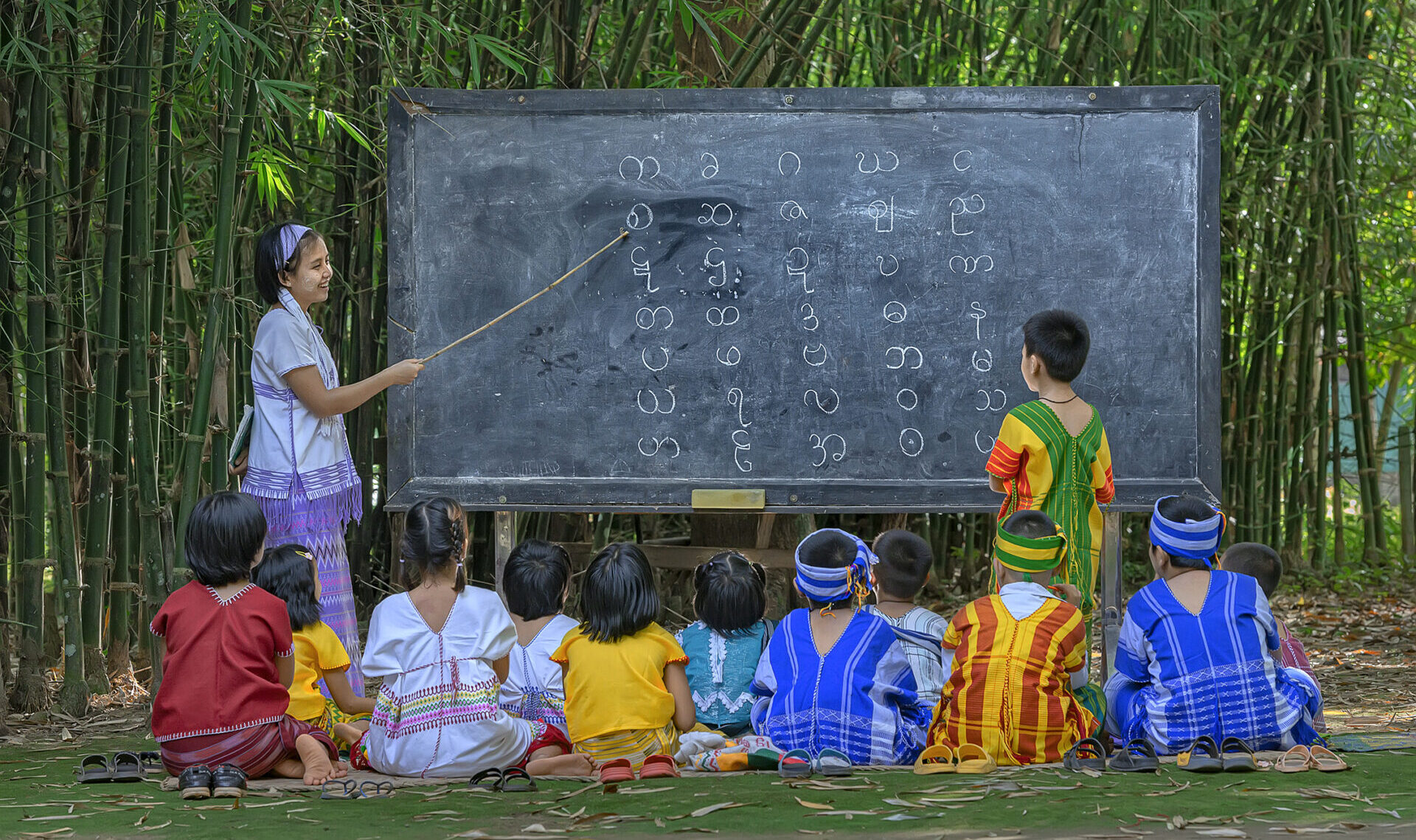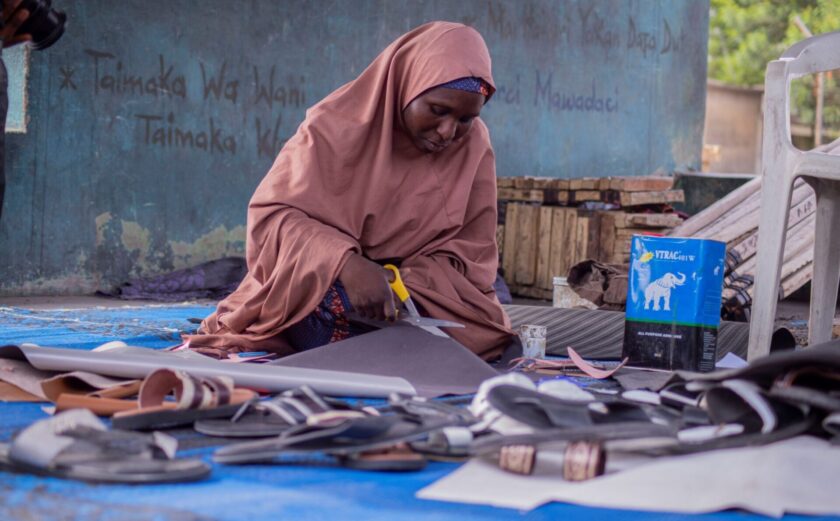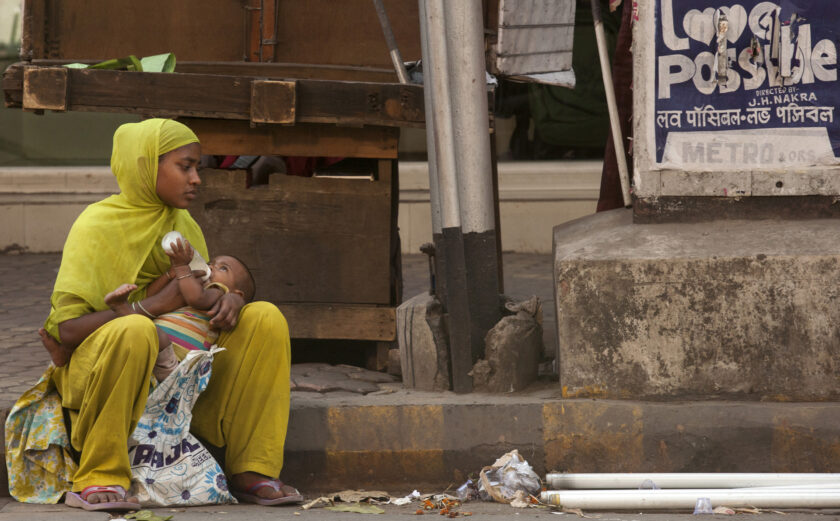
The Missing Link: Early Childhood Development in Child Protection Humanitarian Assistance
In January 2021, the U.S. Congress enacted the Global Child Thrive Act. This landmark legislation aims to give vulnerable children ages 0-8 the best possible start by integrating early childhood development (ECD) interventions into U.S. foreign assistance programs. This is particularly crucial since children and caregivers are among those most affected by humanitarian crises.
The Global Child Thrive Act has the potential to be a vehicle for increased commitment and financing for protection services in humanitarian emergencies and presents an opportunity to create synergies among child protection and ECD actors around health, education, and nutrition systems. However, awareness of the Global Child Thrive Act among Child Protection in Humanitarian Action (CPHA) practitioners remains low, which has hindered both collaboration and impact.
To address this gap, the InterAction Child Protection Task Team brought together the U.S. government, the Alliance for Child Protection in Humanitarian Action, the Child Protection Area of Responsibility, and local and international non-governmental organizations (NGOs) to better understand the opportunities and barriers for advancing protection outcomes through the lens of early childhood development.
Why focus on ECD?
Early childhood experiences set the stage for a lifetime. Yet, this base is endangered by humanitarian crises that amplify risks and stress for both children and their caregivers. ECD programming is crucial to support children’s protection and growth, alongside caregivers’ capacity to provide nurturing care during and after a crisis.
Through this multi-stakeholder dialogue, three themes consistently appeared, which include:
- Adapting and tailoring child protection approaches. To address the need for ECD programming, child protection actors should adapt programs to provide specific support to young children and their caregivers. This includes preventive, responsive, and remedial actions, and attitudes in day-to-day care to buffer against adverse childhood experiences. Protection actors can integrate multisectoral programming interventions in safe spaces and strengthen engagement at the household level and within community, social, and state structures. Tailoring child protection programming to prioritize ECD is crucial in terms of the funding landscape, the maximization of learning across sectors, and ensuring accessibility for all children.
- Coordinating on ECD. The lack of coordination in CPHA and other sectors supporting ECD, such as nutrition or education, has been a significant barrier to implementing integrated programming and including ECD in emergency response. Improved inter-agency coordination and government collaboration are key to enhancing child protection outcomes, particularly in defining responsibilities and means of communication to share resources and jointly work toward protection outcomes.
- Prioritization of ECD. While coordination and integration of ECD in CPHA is crucial, it also needs to be operationalized. Challenges include the lack of roadmaps for ECD integration, the siloed nature of programming, and limited funding. Additionally, ECD is often left out of humanitarian needs overviews and response plans (HNOs and HRPs), leading to inadequate assessments and tracking. To elevate prioritization and funding, child protection actors, humanitarian coordination mechanisms, and donors must work together to incorporate comprehensive ECD interventions.
Recommendations
Drawing on these themes, the following recommendations have been developed for a variety of humanitarian actors to ensure ECD and child protection outcomes can be mutually reinforced:
Child protection actors should:
- Communicate the significance of ECD within CPHA programming.
- Disaggregate data to accurately capture the inclusion of young children.
- Adapt CPHA resources to better integrate ECD approaches and collaborate with health, nutrition, and education sectors.
- Increase awareness and accountability for inclusive programming across ECD and CPHA, especially for children with disabilities.
Sector/Cluster coordination should:
- Enhance data collection and sharing that measures ECD across different domains in humanitarian response plans.
- Assess cross-sector activities and clarify responsibility for ECD in emergencies.
- Advocate for the inclusion of ECD in humanitarian needs overviews and response plans.
- Designate an ECD focal point within humanitarian response mechanisms.
- Communicate ECD needs at the onset of an emergency and throughout protracted responses.
- Engage with NGOs and national stakeholders to promote multi-sectoral actions that address nurturing care components.
- Ensure representation of relevant ECD stakeholders and affected populations in humanitarian response.
Donors should:
- Prioritize funding for programming that allows a multi-sectoral approach for ECD to be integrated across sectors.
- Require indicators that support ECD and nurturing care of children and that are disaggregated by age, sex, and disability.
- Encourage collaboration between humanitarian and development actors to achieve ECD outcomes throughout a crisis.
- Consult and develop capacity with national actors to strengthen planning, policies, and services.
The full policy brief, found HERE, further outlines these findings and recommendations.
—
About the Authors
Elana Banin is a Policy Advisor at the International Rescue Committee, focused on igniting commitment for children and families in crisis and conflict. She has spent 15 years working on issues spanning humanitarian, development, and peace in Southeast Asia, the Middle East, and African regions.
Michelle Van Akin is a Child Protection in Emergencies Technical Advisor with Plan International with a decade of experience in child protection in humanitarian action at both the country and global level. Michelle has directly managed child protection responses in a variety of humanitarian settings in Africa, Asia, and the Middle East.
The views expressed in this blog are the authors’ own.
For information or questions regarding the brief or InterAction’s Protection Working Group, please contact Caroline Zullo.








